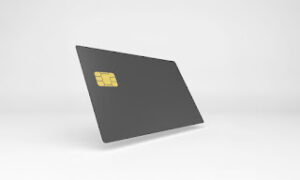Solar EV charging and storage systems refer to the combination of solar panels, energy storage systems (ESS), and EV charging stations. Solar panels generate electricity and store excess energy in ESS for charging electric vehicles or other devices. It efficiently utilizes clean energy and ensures stable operation of the power grid.
However, in order to ensure the performance, safety, and reliability of the entire system, comprehensive and in-depth solar EV charging and storage testing is particularly important. It can identify potential problems, optimize the system design, and improve user experience.
Read on to learn more about innovative solar EV charging and storage testing solutions!
What Needs to be Tested?
The components of solar EV charging systems need testing for reliable performance. Proper evaluation helps maintain the system’s reliability while optimizing functionality. Here’s an overview of what needs to be tested:
1. Photovoltaic Inverter
The photovoltaic inverter is the heart of a solar EV charging and storage setup that converts DC power generated by solar panels into AC power. Solar inverter testing is crucial to verify the device’s conversion efficiency, voltage stability, durability, and protection mechanisms under varying loads.
Furthermore, testing ensures compatibility with energy storage systems and safeguards against grid irregularities. It validates that the inverter delivers optimal energy conversion while meeting safety and performance standards.
2. Energy Storage Inverter
Energy storage inverters manage the energy flow between the battery storage system, solar panels, and EV charging stations. Its performance determines how effectively energy is stored and utilized.
Comprehensive solar battery testing is performed to assess charge-discharge efficiency, response time, and durability. Also, it can evaluate the fault tolerance to ensure smooth energy transitions. By ensuring optimal operation, this step directly impacts the reliability of the solar EV charging and storage system.
3. AC/DC Charging Station
The AC/DC EV charging station handles the power delivery from storage or the grid to the electric vehicle. In the EV charger testing, it’s significant to assess the station’s interoperability, protocol consistency, metering calibration, etc.
Both AC and DC stations must be tested to ensure safe and fast charging without overloading the system. This testing ensures that the solar EV charger systems support seamless energy delivery.
ActionPower’s Integrated Testing Solution for Solar EV Charging and Storage System
ActionPower is a leading manufacturer of advanced power testing solutions. They specialize in programmable AC/DC power supplies and integrated testing solutions.
Considering the high requirement for testing solar EV charging and storage systems, the company has launched an effective integrated solution for testing photovoltaic systems (PV), energy storage systems (ESS), and electric vehicle (EV) charging stations.
1. PV/ESS System Testing
The PV/ESS testing system can simulate various actual operating conditions to evaluate and verify the comprehensive performance of solar power generation and energy storage systems.
Key features include:
- Easy to Upgrade: The bidirectional programmable DC power supply, programmable AC power supply, and RLC loads used in the testing system support parallel connection of the same model with high parameter consistency. This enables the system to be easily expanded to meet the different testing needs.
- Wide Compatibility: The system adopts a standard driver framework, allowing similar instruments to be exchanged and supporting the integration of devices from different brands. The continuous upgrading of system drivers and instruction sets ensures its long-term compatibility and scalability.
- Flexible Configuration: It can cover both photovoltaic and energy storage inverter testing simultaneously, supporting the integration of multiple testing requirements from manufacturers and industry standards. Modular authorization and collaborative development of different people prevent the testing process leakage. Moreover, its function of one-click generation of test reports and custom report styles greatly improves testing efficiency.
2.EV Charger Testing
ActionPower also provides the DC and AC EVSE testing system. It evaluates interoperability, protocol consistency, and metering accuracy for both AC and DC charging stations.
Key features include:
- Meet various testing standards such as Chinese standards, Chao Ji, European standards, American standards, etc.
- DC loads can operate independently or in parallel, meeting the needs of users for multi-scenario testing with high flexibility.
- The power grid simulator series is complete and can be operated in parallel to meet various power level tests.
- Support automatic waveform acquisition and analysis, automatic control of guidance signals, automated testing, and one-click generation of test reports.
- Support manual testing with flexible solutions, which can be combined freely according to customer requirements.
- The interaction design is simple and convenient, allowing users to easily operate.
Throughout the testing process, the solution supports automated testing and can guide users through pop-ups. It can automatically record and analyze test data and generate reports with just one click. This greatly improves efficiency and saves time and costs for equipment manufacturers and testing agencies.
Practical Application of Solar EV Charging and Storage Testing
Thorough solar EV component testing is essential for their reliable working in various scenarios. Here are the key practical applications:
1. Urban Charging Stations
Urban areas are experiencing rapid EV adoption that requires dependable and scalable solar EV charging systems to meet the demand. Testing verifies that the stations can manage high usage levels and integrate smoothly with the local power grid, ensuring a stable power source for EV charging.
Furthermore, thorough solar inverter testing and ESS testing guarantee continuous and reliable power conversion, which is essential for the daily charging needs of commuters.
2. Community Charging Stations
Community-based hubs promote energy-sharing and reduce dependency on the traditional grid. The solar EV charging components need rigorous testing to maintain a consistent power supply.
Moreover, it also ensures that these systems meet safety standards and support diverse vehicle models. In this way, solar EV charging and storage testing fosters widespread electric vehicle use in local communities.
3. Highway Service Area Charging Stations
Highway service areas require high-performance solar EV chargers to support long-distance travelers. In this context, testing focuses on ensuring fast charging capabilities and energy storage reliability.
Also, these systems must operate efficiently under varying weather conditions and heavy usage. So, it’s important to test ESS, solar inverters, and EV chargers to maintain an uninterrupted energy supply for travelers.
4. Industrial Park Charging Stations
Industrial parks often install solar EV charging systems to serve employees and logistics fleets. These setups must be tested to ensure that they can manage high-capacity energy loads efficiently.
In such energy-intensive settings, optimizing power management and sustainability is a top priority. For that, embracing solar-powered charging solutions offers a clean electric supply for EVs.
Conclusion
In short, testing solar EV charging systems is essential to ensure long-term reliability. From inverters to EV charging stations, each component delivers an efficient charging experience.
ActionPower’s integrated testing solutions offer cutting-edge technology and automation to meet all testing needs. So, for those in need of high-quality testing services, contact ActionPower for enhanced solar EV charging and storage efficiency!
































